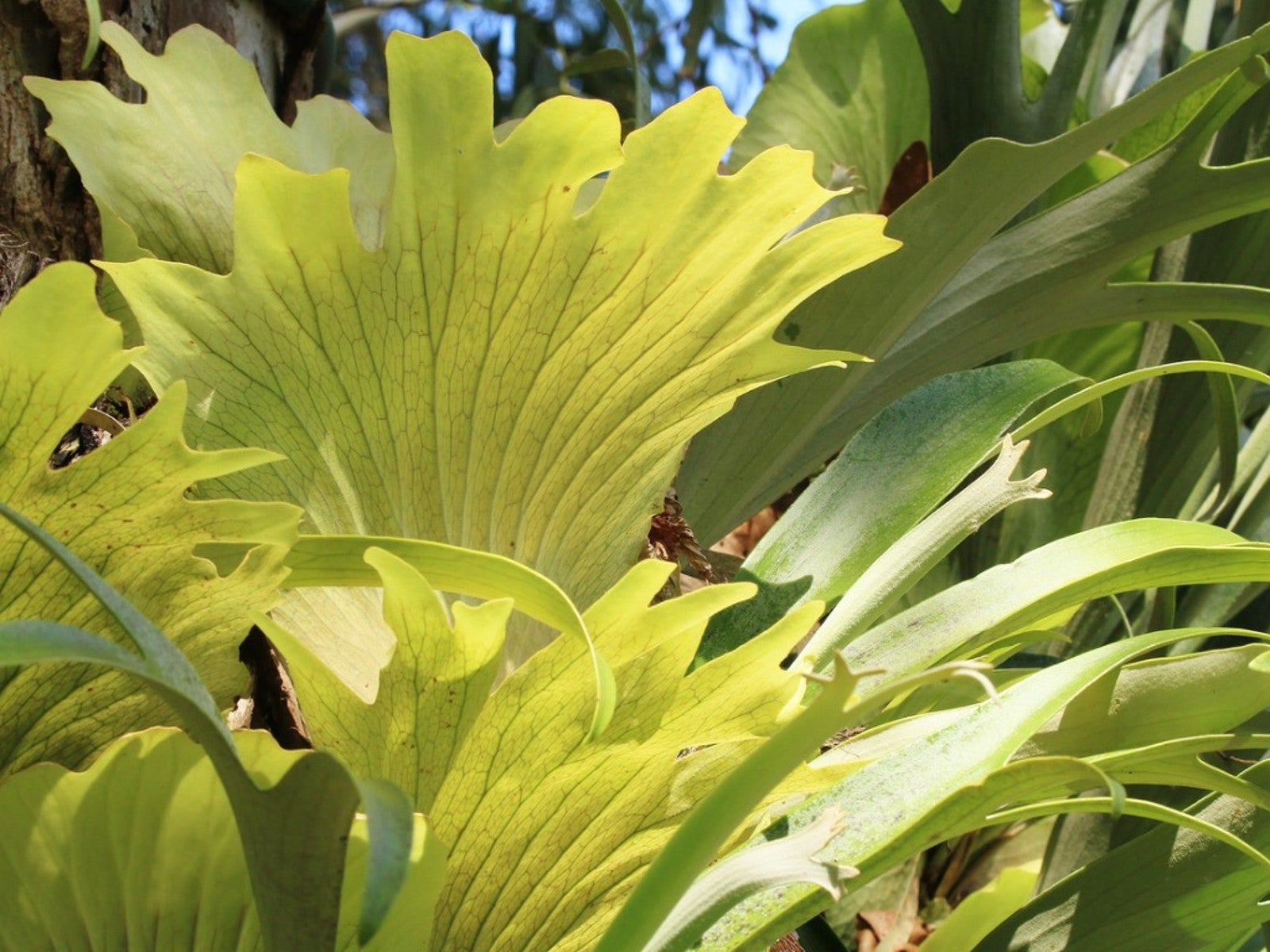Staghorn Fern Fertilizer – When To Feed Staghorn Ferns


If you have a staghorn fern, you have one of the most interesting plants available. These tropical beauties grow on many different types of structures, or they can be raised in containers just like any plant. Caring for the plant is relatively simple, but watering is one chore that is often done incorrectly. Knowing how to fertilize a staghorn is another task that requires timing, and some know how. We'll provide some tips on the correct staghorn fern fertilizer, as well as the when and how.
When to Feed Staghorn Ferns
In nature, staghorn ferns can be found clinging to rocks, stumps, tree crotches, and almost any handy space. They are epiphytic and gather moisture and nutrients from the air with additional sources washed into the cracks their roots have grown into. In their native tropical setting, plant detritus decomposes and filters into the cracks, creating nutrient rich pockets. As houseplants, they may be mounted or pot bound, but their resources are thinner in an urban setting. That means supplemental staghorn fern feeding is necessary for optimum health. For most plants, fertilizers are used during the active growing season. This is the case with staghorn ferns as well. In the winter, the plant is fairly dormant and does not need extra nutrients to fuel growth. During the growing season, feeding a staghorn fern monthly will keep it in tip top shape. A liquid food is best for staghorn fern feeding. It can be diluted to prevent burning and is easy to apply. Young plants may be fed monthly during warm months and every other month during the cool season. Once plants are mature, they can thrive with just a one or two annual feedings during the growing season.
Staghorn Fern Fertilizer Choices
Staghorns will do well on a product with a balanced ratio, such as a 10:10:10 formula. If a liquid purchased product doesn't pass your organic or natural test, there are other options. Staghorn ferns and banana peels are an option that is popular. You simply put a peel under the shield leaves. Overtime, it will decompose and release nutrients to the plant. For quicker decomposition, cut the peel into pieces and slip them under the plant. This will provide high amounts of phosphorus and potassium so you might want to supplement with some nitrogen rich source. Feeding a staghorn fern with banana peels provides a slow release of nutrients that is easy for the plant to uptake.
How to Fertilize a Staghorn
Depending upon the product you use, the actual amount of fertilizer used will vary. In most cases, the container will recommend the correct amount of food and tell you how to use it in water. For mature ferns that are getting fertilized more than once or twice per year, dilute the solution by half. You then water it in as part of your irrigation chores on behalf of the plant. Another method is to use a small amount of granular time release fertilizer sprinkled onto the sphagnum moss. Keep the moss moist as long as the fertilizer is visible to allow the nutrients to leach out of the food. Such controlled release food prevents excess nutrients from building up and gives a gradual feeding over time.
Gardening tips, videos, info and more delivered right to your inbox!
Sign up for the Gardening Know How newsletter today and receive a free copy of our e-book "How to Grow Delicious Tomatoes".

Bonnie Grant is a professional landscaper with a Certification in Urban Gardening. She has been gardening and writing for 15 years. A former professional chef, she has a passion for edible landscaping.
-
 How To Make A Bouquet Garni Or Herb Bundle For Cooking
How To Make A Bouquet Garni Or Herb Bundle For CookingIf you’re a great cook, you may have made an herb bundle before. If this is a new idea, learn how to add sparkle and interest to your dish with a bouquet garni.
By Amy Grant
-
 ‘Coral Charm’ Peony Care For Sublime Semi-Double Peonies With Lush Salmon Pink Flowers
‘Coral Charm’ Peony Care For Sublime Semi-Double Peonies With Lush Salmon Pink FlowersPeonies are known for their soft baby pink or magenta tones, but if plushy coral blooms are your thing, here’s our guide to the ultimate ‘Coral Charm’ peony care
By Tonya Barnett